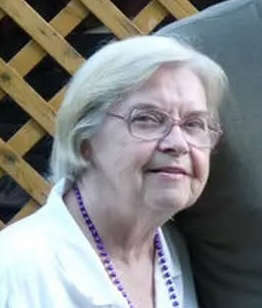
This column is going to be a shameless plug for Fukuoka, Japan, my adopted place of residence where I call home.
It has such a wonderful variety of interesting historical and cultural offerings that make it well worth adding to your itinerary when you visit Japan.
When I first relocated to Fukuoka (on the island of Kyushu in southern Japan) from the northern most tip of Honshu Island (in the heart of snow country, Aomori Prefecture), where I had lived for 20 years, I was quite excited at the prospect of being more near a cosmopolitan area. I was looking forward to having easy access to historically- and culturally-significant museums, as well as Western-themed and traditional Kabuki plays, pottery exhibitions, and classical and pop concerts.
Fukuoka has not disappointed me in the least. It boasts just about anything and everything that much bigger cities offer their residents. For example, Fukuoka hosts the autumn Grand Sumo Tournament where all the Sumo wrestlers come to compete in the annual “basho” (tournament).

I have attended at least one day every year since moving to this area. I love experiencing the pomp and ritual of the bouts (photo), along with the culture and history of the sport itself.
The bouts take place for two weeks in November every year. For sure, it is well worth planning a visit to Fukuoka at this time to get to attend an authentic Grand Sumo Tournament, as well as to enjoy the glorious autumn weather we have during this season.
I guarantee that if you aren’t a Sumo fan now, after experiencing a tournament in person, you will become a fan. It is exciting and thrilling to watch, and quite easy to understand and grasp after just a short amount of time watching it.
In addition to the traditional sport of Sumo, Fukuoka also boasts a Grand Kabuki Theater where traditional Kabuki performances are offered in the 1,500-seat Hakata-za. Upon entering the theater, guests are greeted with an elegant and huge reception hall with high ceilings and plush carpets.

Kabuki is a traditional art form that is steeped in history and tradition. Nearly everyone is familiar with the white makeup that represents the actors who don beautifully embroidered costumes that are bursting with colors and elegance.
The stage sets are equally lovely and gorgeous. The musicians who accompany the actors with traditional music sit to the left and right of the stage, separated and hidden by screens (with the exception of two musicians who are located down stage in full view of the audience members).
Kabuki performances, like a day of Sumo matches, can be quite long, lasting for hours, but with several intermissions included, the time passes by quickly and it doesn’t seem to be that long. There is so much going on between the actors on stage, accompanied by the traditional hauntingly mysterious music, all of which serve to hold your rapt attention.
One downside is that the Japanese used by the actors is quite old-fashioned, making it difficult to understand, but it is the same for native-Japanese speakers who have difficulty following the dialogue. When I attended, I was given an English program that offered a short synopsis of the various aspects of each segment of the play’s plot and a bit of background about the play’s cast members. Since I referred to it throughout the performances, I really had no problem following what was happening.
The actors’ movements are big and exaggerated, making it easy to follow. Again, even Japanese speakers do not understand the dialogue completely, so no worries about not being fluent in Japanese.
Another exciting aspect of a Kabuki play is when a new character enters the stage, the audience applauds loudly. Sometimes they enter from the back of the auditorium on a long, elevated runway-like side stage that offers a closeup view of the actors and costumes as they scurry to the main stage.
Of course, all the characters — male and female — are played by men. Historically, both men and women performed. But in 1629, the Edo Shogunate banned women from performing because it was thought that the women were too susceptible to becoming prostitutes. From then on, only men were allowed to play both gendered roles of men and women.
Men who play the female roles are called “onnagata,” while those who play the male roles are divided into two groups: “aragato” (rough style — with more macho behavior employing loud, dynamic foot stomping) and “wagato” (soft style — usually less dramatic or exaggerated in their movements, playing supportive roles to the main actors).
Common themes of Kabuki plays are often centered around historical events that include some sort of moral dilemma or conflict, along with affairs of the heart, and/or honor and revenge. Admittedly, while I like attending Kabuki, the pricy cost for tickets has made me hesitate to attend regularly and frequently.
Of course, seats in the “nosebleed” sections, way up high, are much cheaper. But I prefer to be in the seats that allow you to really see the expressions on the actors’ faces and to watch their eyes cross, another feature of a Kabuki performance.

One more advantage of living in Fukuoka is the easy access to world-class museums. In fact, Fukuoka is home to Kyushu National Museum (photo), the newest of the four national museums in Japan. Opened in 2005, it is joined by the Tokyo, Kyoto, and Nara National Museums and it primarily focusses on the history of Kyushu along with many exhibits that feature other Asian countries’ culture and history.
The website (www.kyuhaku.jp) states that the museum recognizes the history of Dazaifu (where it is located). Fun-fact: historically, Dazaifu was the site of a governmental office complex that dealt with diplomatic relations for Japan. The Kyushu National Museum also bases its exhibits on the novel concept of “understanding Japanese culture from an Asian point of view.”
The first time I visited the museum after first arriving to Kyushu, I was mesmerized by its size and beauty. I was pleasantly surprised to have such a modern, world-class museum so nearby that I could visit often and for a nominal entrance fee.
The building itself is built into the side of a mountain that uses a huge escalator to whisk visitors up to the entrance. The shape and design of the expansive museum blends perfectly into the natural landscape and geography of the location.
In the general area of the museum is the historic district of Tenman-gu Shrine, which is considered to be one of the most important shrines alongside Kyoto’s Kitano Tenman-gu Shrine in Japan. Shrines associated with Tenman-gu are dedicated to the spirit of Sugawara Michizane, a Heian Period (794-1185) scholar and political figure.

The Dazaifu shrine complex (photo) is easily accessible from the train station and boasts many traditional and beautiful landscape displays.
It is located on the way to Kyushu National Museum. Many students visit the Dazaifu Shinto Shrine to pray for success in their studies in order to pass entrance exams into high schools and universities.
The museum has an extensive and impressive collection of objects and artifacts that are expertly and creatively exhibited in an elegant and meaningful manner. Several small theaters displaying multi-media technology allow the viewing of historical and cultural aspects of some of the highlighted exhibits. It is also very kid-friendly, with a number of exhibits that are geared toward hands-on learning and interactive participation.
In addition, Kyushu National Museum prides itself on being fully accessible to wheelchair users, the vision or hearing-impaired, as well as those with developmental disabilities.
I appreciate the fact that the museum strives to include explanations in languages other than Japanese, so visitors from diverse linguistic backgrounds can enjoy the displayed artifacts. Signage and labels are provided in English, Korean and two Chinese scripts, traditional and simplified. Audio guidance is available in 34 languages, so don’t forget your smartphone and earbuds if you wish to listen to it!
Even exhibits in the permanent collection are rotated occasionally, allowing new items to be viewed on return visits. On the third floor, special exhibitions are changed every few months, so frequent museum visitors have an opportunity to enjoy different exhibits each time.
So, what do you think?
Fukuoka is well worth adding to your Japan itinerary, wouldn’t you agree? There is so much more that Fukuoka offers visitors, so I will save those aspects for a future column.
The Shelby County Post is a digital newspaper producing news, sports, obituaries and more without a pay wall or subscription needed. Get the most recent Shelby County Post headlines delivered to your email by visiting shelbycountypost.com and click on the free daily email signup link at the top of the page.






